Written by Zubin Sanyal, Principal.
From digital trucks to digital ads, these offbeat tactics are quietly, or not so quietly, shaping the election conversation.
I’m penning this update on Monday, March 31, after a week of absolute whiplash:
- A fresh 25% tariff slapped on automobile imports to the United States.
- Former NDP leader Tom Mulcair telling Canadians not to vote for his own party.
- Liberal projections hitting a wild 185 seats in some polls.
- So. Many. Leaks. From the worst laid plans in Yemen, to conservative heavyweights chatting with the Toronto Star, to allegations of bullying (not great!) at CPC HQ.
And whatever this is supposed to mean:
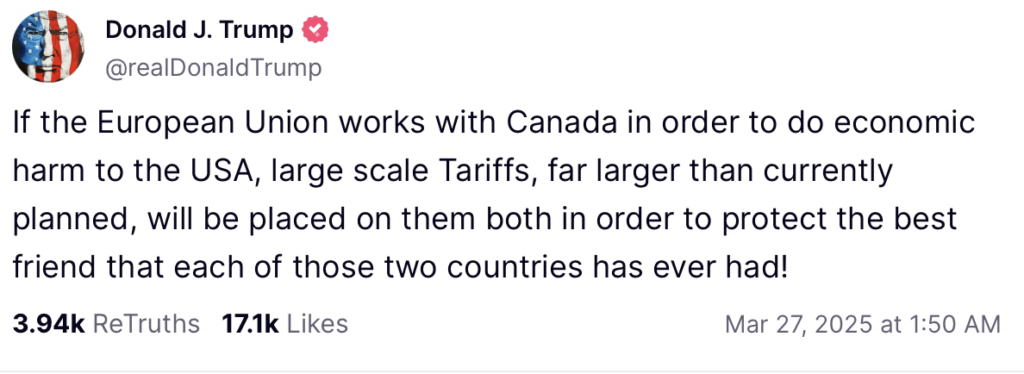
Before we jump into third-party advertising…
I noticed something interesting in the party spending data that I wanted to share with you. Focus on the highlighted column ‘Number of ads in library’.
What do you see?

For context, this column is defined by Meta as “The total number of ads in the Library that reached people on Meta technologies for the selected country and date range specified.” Right now, the Liberals are running nearly 2,000 ads. That’s a lot of ads. What’s really interesting, though, is the spend-to-volume ratio.
Here’s the breakdown: the Liberal Party’s page is running roughly four times as many ads as Carney’s page, yet it’s spending less than half. Carney’s page concentrates its resources on fewer ads with a higher spend per ad.
This is the digital campaign secret sauce in action.
The Liberals are using a disciplined, iterative approach to message testing. They run hundreds of variations through the LPC page, identify top performers, then are likely promoting those winning messages to Carney’s page. We nerds often call this laddering, where only the best content graduates to the high-stakes account without losing its impact or cachet.
I love watching this strategy unfold. Some might call it magic, but it’s really just cutting-edge political operations in real time.
Modern campaigning, when done right, is all about rapid optimization. Every ad is measured against a series of metrics, and the moment one fails to hit its targets, it’s replaced. Blink and you might miss the next pivot.
In a race where every minute could swing the outcome, these nuanced moves can decide whether you win or lose key ridings by the slimmest margins. I’m curious to see where the CPC and Poilievre go from here, because if these metrics are any indication, they have some catching up to do.
We’ll do a deeper dive into the CPC and their ad strategy next week.
Also, the NDP are finally running an ad on Facebook and Instagram featuring their leader. I really like it.
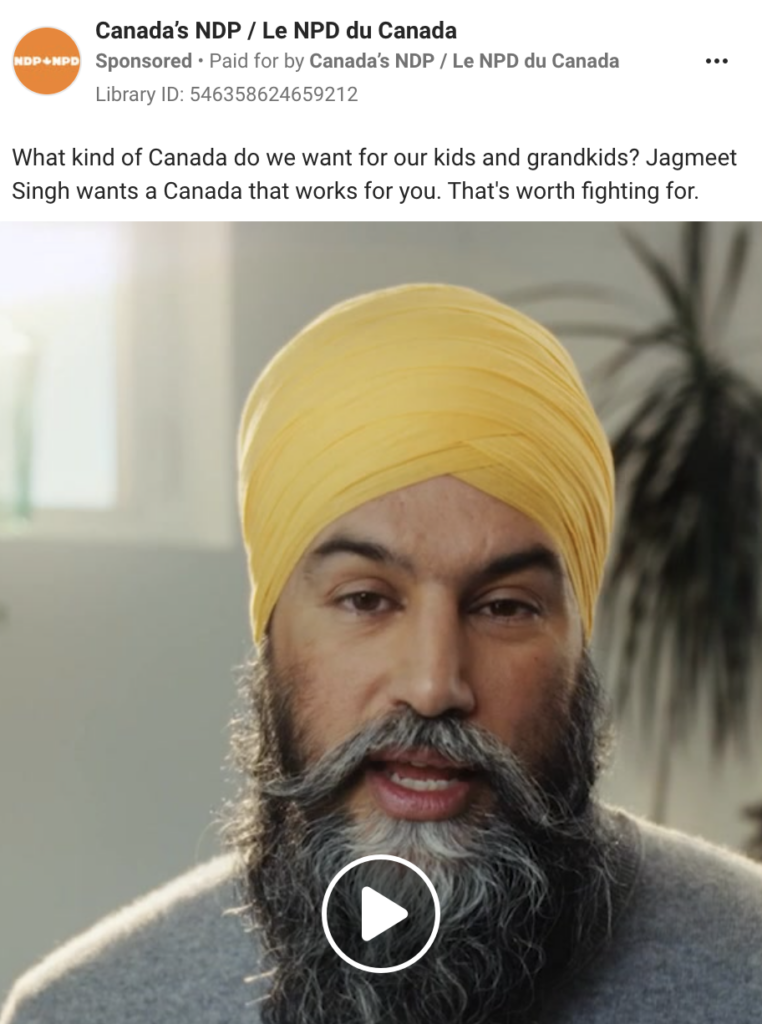
Now, for why you came. Third parties.
Unsurprisingly, many of the aggressively anti-Carney, anti-Poilievre campaigns have paused or suspended their ads since the writ period began.
Below is a snapshot of what we were bombarded with before the election was called. The messaging was hyper-aggressive, the visuals were erratic, and everything was crafted to be as jarring and provocative as possible. It’s obvious the creators behind these campaigns know how to command attention, but in the grand scheme, it may not matter.
There are too many external forces influencing voters, and I’m not convinced these tactics landed the way they were intended. If 338Canada’s projections prove accurate, this surge of negative advertising hasn’t had the impact its originators might have hoped.




The digital landscape seems much quieter now, though it still holds a few twists worth noting.
Canadian Federation of Nurses Unions
Health care is definitely on the ballot, and nurses have a clear-cut message: they’re urging their colleagues to elect leaders who will protect and properly fund Canada’s public healthcare system. Instead of casting a wide net, the campaign’s video zeroes in on nurses themselves, harnessing the power of their collective action. It’s an uncommon tactic but a smart one, proving that sometimes you need to resonate with the right audience rather than the entire world.
From an advertising standpoint, the campaign uses a simple static post and a longer-form video that drive people into a letter-writing module prompting emails to party leaders. It’s a time-tested approach: it rallies support, and crucially, collects first-party data that can fuel ongoing advocacy.


The Public Service Alliance of Canada
A heavyweight in the advocacy space, PSAC is throwing what they’ve got at the Conservatives by taking direct aim at Poilievre. With more than 200,000 members nationwide, their votes are critical.
The Liberals will need to get creative to either secure these voters or pull them away from the NDP, using PSAC’s messaging to undermine Poilievre’s credibility among other unions and associations that might be leaning Conservative.
Much like the nurses’ campaign, PSAC’s ads lead to a straightforward landing page where contact acquisition is the primary goal. In political advertising, if you aren’t establishing direct lines of communication, you might as well be tossing your ad dollars into the Saint Lawrence.
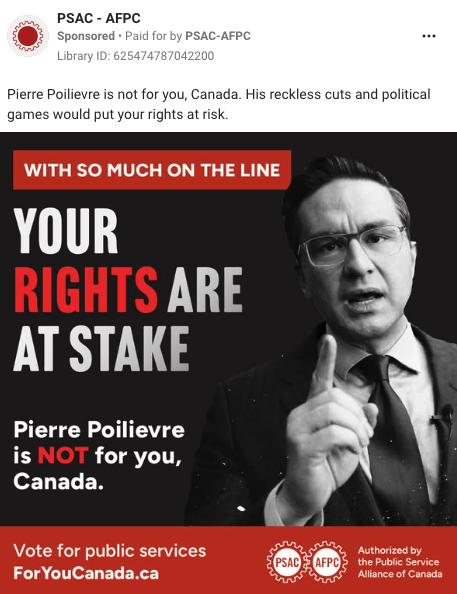


The Pulse
It’s The Epoch Times.
No website, fewer than 500 followers and a Facebook page created on November 28, 2024. It’s them.
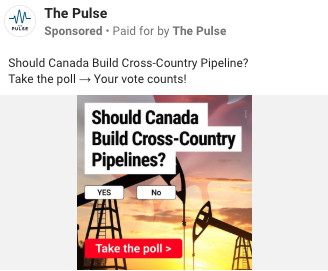
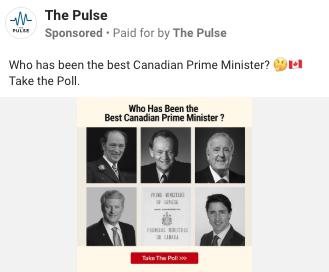
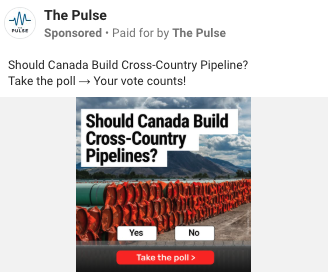
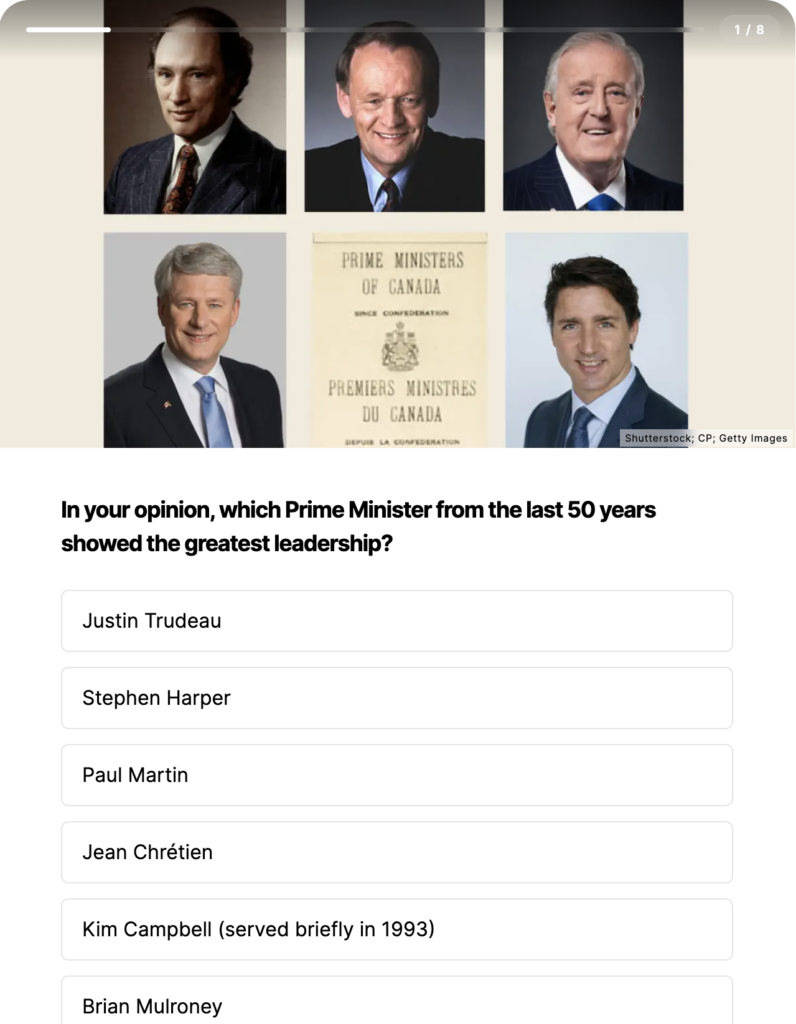
I decided to bite and clicked through one of their many survey-style ads. The page is suspiciously unbranded (which is highly unusual) until the very end of the survey, where they reveal their identity and ask for your email. I hope Elections Canada keeps a close eye on who’s advertising and follows up appropriately after the election.
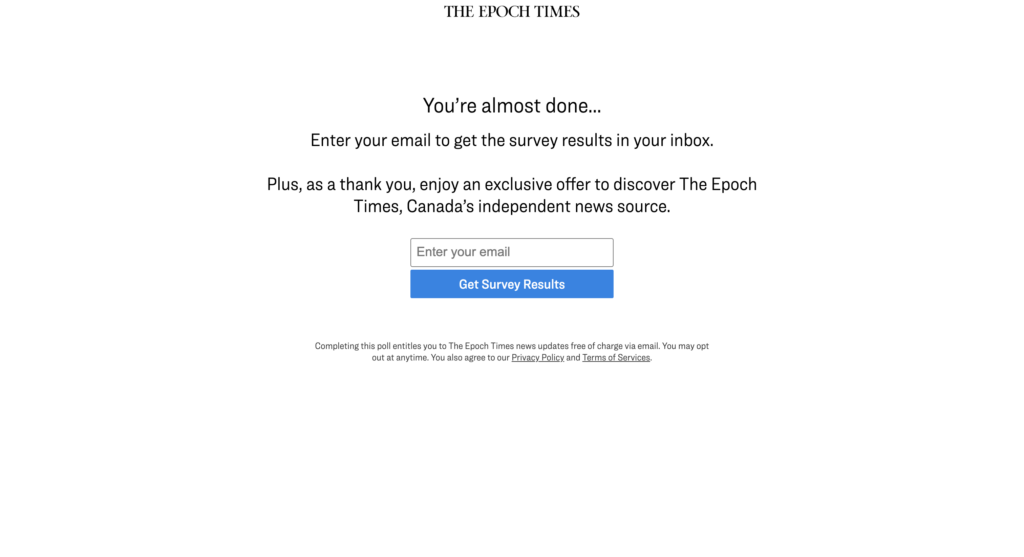
An alternative approach to advertising
Although most third-party social media ads have gone dark during the writ, that hasn’t stopped some from finding creative ways to spread their message.
Case in point: the Rebel News-backed “For Canada” group is rolling a digital truck through downtown Ottawa touting Carney’s WEF credentials. In a riding that’s never gone blue, and with Carney himself nowhere near Ottawa, I’m unclear as to why anyone would drop $35,000 (plus HST) on this stunt.
Maybe it’s just to entertain the folks passing by. Speaking of which, whatever happened to the city’s nightlife director?

